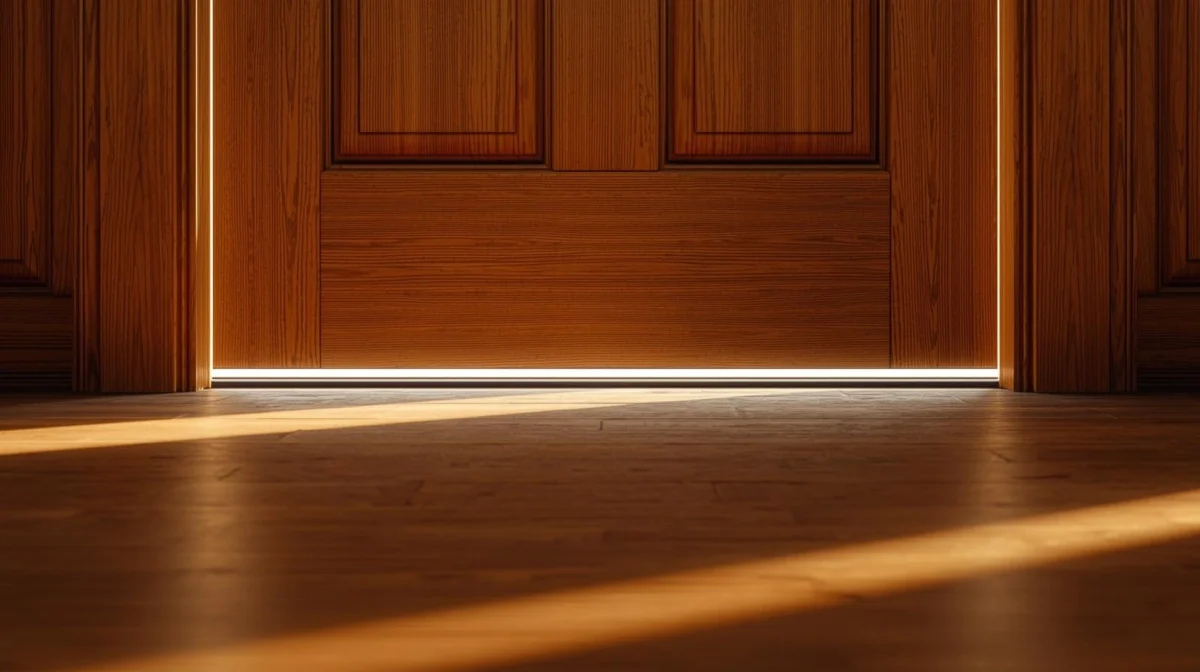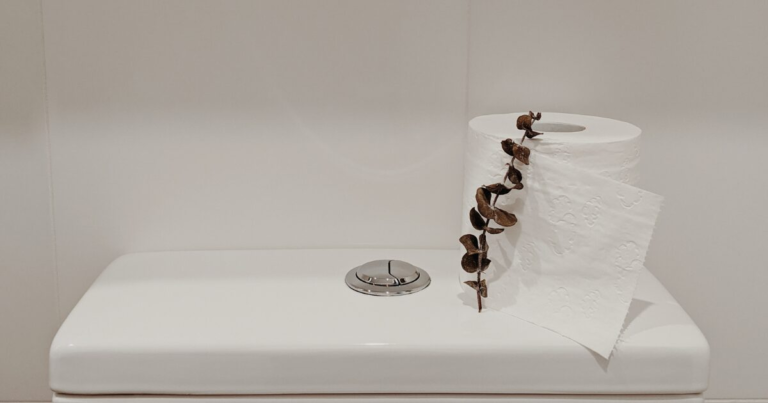Introduction
If you’ve ever walked past your front door and felt a chill on your ankles, you already know how irritating—and costly—drafts can be. That sneaky stream of cold air isn’t just uncomfortable; it’s quietly draining your wallet every month. According to the U.S. Department of Energy, air leaks like this account for 25–40% of heating and cooling costs in the average home.
The good news: you don’t need to replace your entire door or hire a contractor. With a little know-how, you can stop drafts around exterior doors using simple, budget-friendly fixes. This article provides:
- Quick DIY solutions under $30.
- A detailed comparison of door sweeps, weatherstripping, and draft blockers.
- Step-by-step guidance on sealing doors properly.
- Science-backed explanations of why drafts happen.
- Eco-friendly product alternatives.
- Regional considerations (cold, hot, humid climates).
- A cost-benefit analysis of DIY vs pro fixes.
- Affiliate recommendations of Amazon best-sellers.
(Affiliate Disclosure: This post contains affiliate links. If you purchase through them, Handy Hack Haven may earn a small commission at no extra cost to you. I only recommend reliable, highly reviewed products that provide genuine value.)
Why Drafts Happen: The Science of Air Leaks
Drafts occur because air naturally moves from high pressure to low pressure. In winter, warm air rises inside your home (the “stack effect”), creating suction that pulls cold air through gaps around doors and windows.
Here’s the shocking part: a ⅛-inch gap along the length of a standard 36-inch door leaks as much air as a 2.4-inch hole in your wall. That’s like leaving a small window open all winter.
👉 Knowing the science helps you understand why sealing even “tiny” leaks makes a big difference in comfort and energy bills.
Common Causes of Drafty Doors
- Worn Weatherstripping – compresses, cracks, or falls off after years of use.
- Gaps Under the Door – worn sweeps or loose thresholds.
- Misaligned Doors – sagging hinges or warped frames create uneven spaces.
- Hardware Leaks – gaps around locks, peepholes, and mail slots.
- Rot or Structural Issues – Damaged frames or thresholds allow air to pour in.
💡 Test Tip: Close the door on a dollar bill. If it slides out easily, the seal is too weak.
Detecting Drafts Like a Pro
You can’t fix what you don’t measure. Try these detection methods:
- Flashlight Test: Shine a flashlight outside the closed door at night; light leaks = air leaks.
- Smoke/Incense Test: Watch smoke waver along edges.
- Thermal Camera/Infrared Thermometer: Pinpoint heat loss. Some smartphones now support FLIR attachments.
Quick Fixes Under $30
- Install a Door Sweep or Draft Stopper
- Blocks the bottom gap. Sweeps are permanent, draft “snakes” are removable.
- Add Adhesive Foam Weatherstripping
- Peel-and-stick; ideal for small side/top gaps.
- Use V-Strip or Felt Weatherstripping
- Better for medium gaps and irregular frames.
- Caulk the Frame
- Seal gaps where the frame meets the wall with exterior caulk.
- Temporary Fabric Draft Blockers
- Decorative and renter-friendly; move as needed.
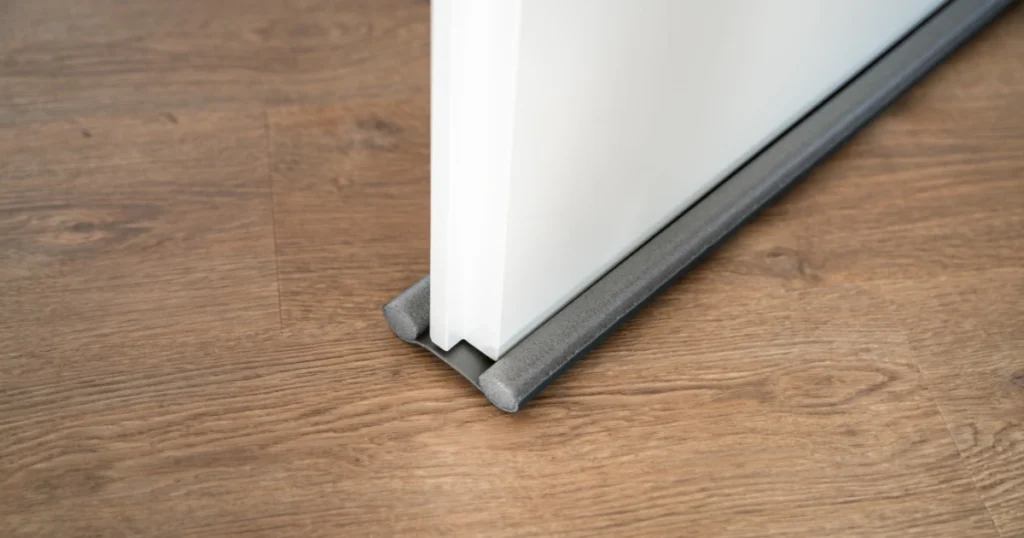
Regional & Seasonal Considerations
- Cold Climates: Focus on heavy-duty silicone sweeps, insulated thresholds, and storm doors.
- Hot Climates: Drafts leak AC, raising summer bills. Use UV-resistant foam strips.
- Humid Climates: Moist air leaks lead to mold and wood rot; prioritize mildew-resistant silicone seals.
Cost vs Savings Breakdown
- Average U.S. household energy bill: $2,000/year
- DOE estimate for sealing leaks: 5–30% savings ($100–$600 annually)
- DIY draft fix supplies: $20–$40
👉 In most cases, a single winter pays back your entire investment.
Repair vs Replacement: When to Upgrade
Not all doors are worth fixing. Here’s a decision guide:
- Fix it if:
- Gaps are under ½″.
- The door frame is solid.
- The weatherstripping is just worn.
- Replace it if:
- The door is warped.
- The frame is rotted.
- Gaps remain after sealing.
💡 Pro tip: ENERGY STAR-rated doors save even more and may qualify for tax credits.
Eco-Friendly & Sustainable Solutions
- Wool Felt Weatherstrips – biodegradable and long-lasting.
- Fabric Draft Stoppers – made with cotton or recycled fill.
- Non-toxic, low-VOC caulks – safer for families and pets.
- Recycled Aluminum Thresholds – durable and eco-conscious.
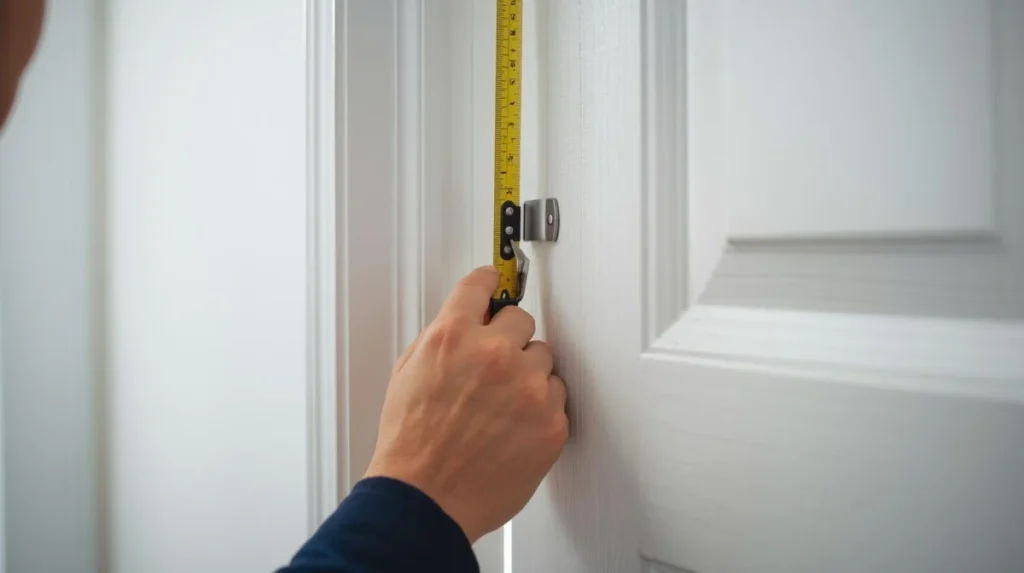
Draft Myths Debunked
- Myth 1: Drafts only matter in winter.
- Truth: Leaks waste cool air in summer, too.
- Myth 2: Foam tape lasts forever.
- Truth: Most adhesive foam strips need yearly replacement.
- Myth 3: Draft stoppers fix everything.
- Truth: They only block bottom gaps—not sides or tops.
DIY vs Hiring a Pro
| Option | Cost | Time | Best For | Downsides |
| DIY Sealing | $20–$50 | 1–2 hrs | Small gaps, handy homeowners | Needs upkeep every 2–3 yrs |
| Handyman/Weatherization | $200–$400 | Few hrs | Multiple doors/windows | Higher upfront cost |
| Full Replacement | $600–$1,500+ | 1 day | Severe drafts, warped doors | Expensive |
Step-by-Step: How to Seal an Exterior Door
- Detect leaks with light/smoke tests.
- Measure gaps (sides, top, bottom).
- Remove old seals and clean surfaces.
- Install new weatherstripping (foam, V-strip, or felt).
- Add a door sweep (cut to size, screw, or stick).
- Seal frame & threshold with caulk.
- Test: close the door, check for light/air.
Product Comparison Table
| Product | Best For | Cost | Durability | Pros | Cons |
| Foam Weatherstrip | Small, uniform gaps | $5–$15 | 1–2 yrs | Cheap, easy | Not durable |
| V-Strip/Felt | Medium gaps | $10–$25 | 2–3 yrs | Flexible | Visible, alignment needed |
| Door Sweep | Bottom gaps | $15–$30 | 3–5 yrs | Strong seal | Needs tools |
| Draft Blocker | Temporary use | $15–$25 | 2–3 yrs | Removable | Must move |
| Threshold | Large bottom gaps | $20–$40 | 5–10 yrs | Permanent fix | Harder install |
Whole Entryway Draft-Proofing Checklist
- Seal door frame edges.
- Install the bottom sweep.
- Caulk exterior joints.
- Check sidelights/transom windows.
- Seal mail slots or install covers.
- Inspect storm door seals.
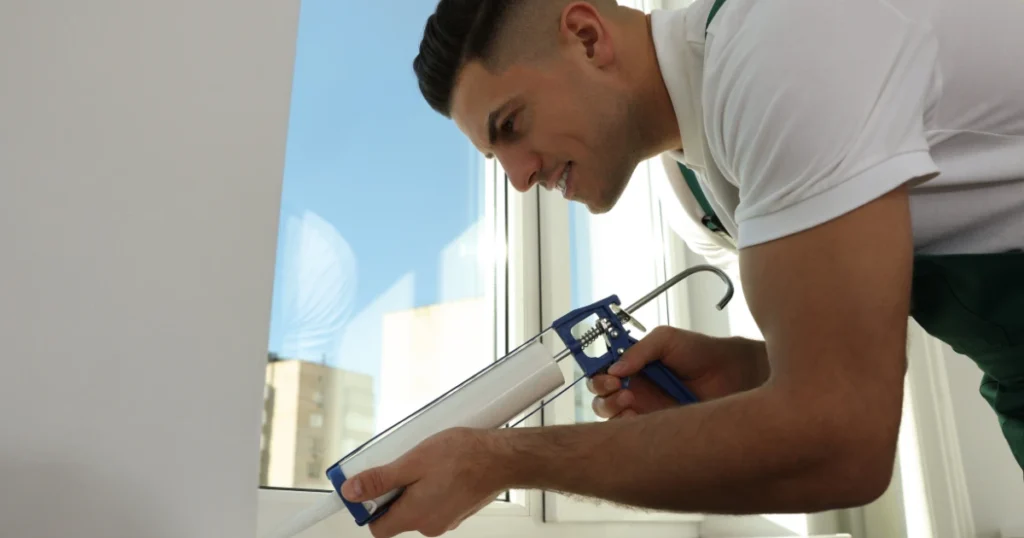
Added Benefits: Beyond Comfort
- Noise Control – less street noise.
- Pest Prevention – blocks ants, roaches, and mice.
- Cleaner Air – fewer allergens and dust.
- Resale Value – energy-efficient homes sell faster.
Affiliate Product Recommendations
Here are some top-rated Amazon options (check sizing before purchase):
- MAXTID Under Door Draft Stopper (36″) – adjustable, foam-filled; great for larger bottom gaps.
- Holikme Adjustable Door Sweep – peel-and-stick + screws; renter-friendly.
- Everlasting Comfort Fabric Draft Stopper – stylish, doubles as soundproofing.
- M-D Building Products All-Season Sweep – durable, heavy-duty for main entry doors.
(Affiliate Disclosure: Handy Hack Haven may earn a commission if you buy through these links.)
FAQs about How To Stop Drafts Around Exterior Doors:
Up to 10–15% on heating/cooling costs if your door was especially leaky.
Yes, but only when the door is closed. Permanent fixes are better.
Yes—use removable adhesive foam tape or draft snakes to avoid lease violations.
Yes, especially in windy/cold regions. Adds insulation and weather protection.
Every 2–3 years, or sooner if cracked or compressed.
You May Also Like,
Conclusion
Sealing drafts around exterior doors is one of the highest-return-on-investment (ROI) DIY projects you can undertake. For as little as $20 and an hour of work, you’ll keep your home warmer, save on bills, reduce noise, and even improve air quality.
Whether you choose a simple foam strip, a durable door sweep, or a full threshold replacement, every small fix adds up to greater comfort and lower costs.
👉 Don’t wait until the next cold snap—grab a tape measure, choose your fix, and seal your doors today.
Looking for More Smart Solutions?
Find cleaning tricks, DIY fixes, and lifestyle hacks all in one place on our homepage
References
- U.S. Department of Energy – Air Sealing Your Home
- Real Homes – 5 Ways to Stop Drafty Doors Fast
- This Old House – Easy Fixes for Drafty Windows and Doors
- Schlage – How to Stop Door Drafts
👉 Want more interesting hacks? See our DIY and Fixes page.


